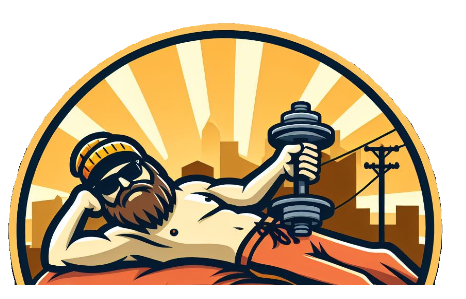Breathing Techniques for Enhanced Athletic Performance
Hitting The Training Wall?
Tired of hitting a wall in your workouts? Discover how mastering your breath can unlock hidden athletic potential and take your performance to the next level.
Most athletes spend hours refining their training routines—tweaking reps, timing, and nutrition. But what if one of the most powerful tools to improve performance isn’t a supplement, exercise, or gadget… but simply how you breathe?
It might sound too simple, but breathing is a foundational part of athletic performance. It affects how much oxygen your muscles receive, how quickly you recover, and even how focused you stay during intense efforts. Yet, many athletes overlook it entirely.
In fact, a 2022 study published in Frontiers in Sports and Active Living found that specific breathing training increased VO₂ max—an essential marker of endurance—by over 15% in amateur runners after just 6 weeks. That’s a bigger boost than many get from expensive coaching or gear.
Let’s take a deeper breath and explore how you can use breathing techniques to improve endurance, build power, and recover faster.
Why Breath Matters
Breathing seems automatic—because it is. But just because it’s automatic doesn’t mean it can’t be optimized.
Every time you inhale, oxygen enters the lungs and is carried by red blood cells to your muscles. This oxygen is used to create ATP, the energy currency that powers movement. The more efficient your breathing, the more oxygen you can deliver—and the more energy you can produce.
Poor breathing habits, like shallow chest breathing or inconsistent rhythms, limit oxygen intake and waste energy. That leads to early fatigue, muscle burn, and mental fog. You might not even realize your breath is the thing holding you back.
Good breathing, on the other hand, keeps your body oxygenated, your heart rate stable, and your mind calm under pressure. Whether you’re a runner, swimmer, cyclist, or weightlifter, dialing in your breath is a game-changer.
Mastering Breathing Techniques
There isn’t a one-size-fits-all method, but there are proven breathing techniques athletes can use to boost performance in different ways.
1. Diaphragmatic Breathing (Belly Breathing):
This is the foundation of effective breathing. Instead of shallow breaths into the chest, belly breathing draws air deep into the lungs, expanding the diaphragm. This allows more oxygen to enter the bloodstream and calms the nervous system.
Practice it by lying on your back with one hand on your stomach. Breathe in through your nose and focus on pushing your stomach upward, not your chest. Breathe out slowly through your mouth. This technique is especially helpful for endurance athletes like runners and cyclists.
2. Rhythmic Breathing:
Coordinating your breath with movement helps with efficiency and rhythm. For runners, this might mean inhaling for three steps and exhaling for two (3:2 rhythm). It spreads the impact stress evenly across both sides of the body and maintains consistent oxygen flow.
3. Box Breathing (used by Navy SEALs):
Great for improving focus and managing anxiety, box breathing involves inhaling for four seconds, holding for four, exhaling for four, and holding again for four. Athletes can use it before competition to enter a calm, focused state or during recovery between sets.
4. The Wim Hof Method:
This technique involves cycles of deep inhalation followed by breath-holding, helping improve lung capacity, endurance, and even immune response. While it’s more advanced and not for everyone, some athletes use it to push their mental limits and train under stress.
5. Nasal Breathing:
Training yourself to breathe through your nose (especially during lower intensity workouts) can increase CO₂ tolerance, improve oxygen uptake, and regulate heart rate. It might feel uncomfortable at first, but over time it strengthens respiratory muscles and leads to more efficient performance.
Breath for Recovery
Breathing doesn’t just help during activity—it plays a major role in recovery, too. After a hard session, controlled breathing techniques can bring your heart rate down faster and shift your body out of “fight or flight” and into “rest and digest” mode.
Try this after your next workout: sit or lie down, close your eyes, and slowly inhale through your nose for 4 seconds, then exhale for 6 to 8 seconds. Do this for a few minutes and you’ll feel your body unwind naturally.
Final Thoughts
Mastering your breath might be the simplest, most affordable performance upgrade you can give yourself. Whether you’re chasing a marathon PR, aiming for a new squat record, or just trying to push past plateaus, learning to control your breath can help you get there faster—and safer.
Remember, athletic performance isn’t just about training harder. Sometimes it’s about training smarter—and your breath might be the smartest place to start.
Follow me on YouTube for more “health” insights.
Steve

Some links on this site may be affiliate links, and if you purchase something through these links, I will make a commission on them.
There will be no extra cost to you and, you could actually save money. Read our full affiliate disclosure here.

